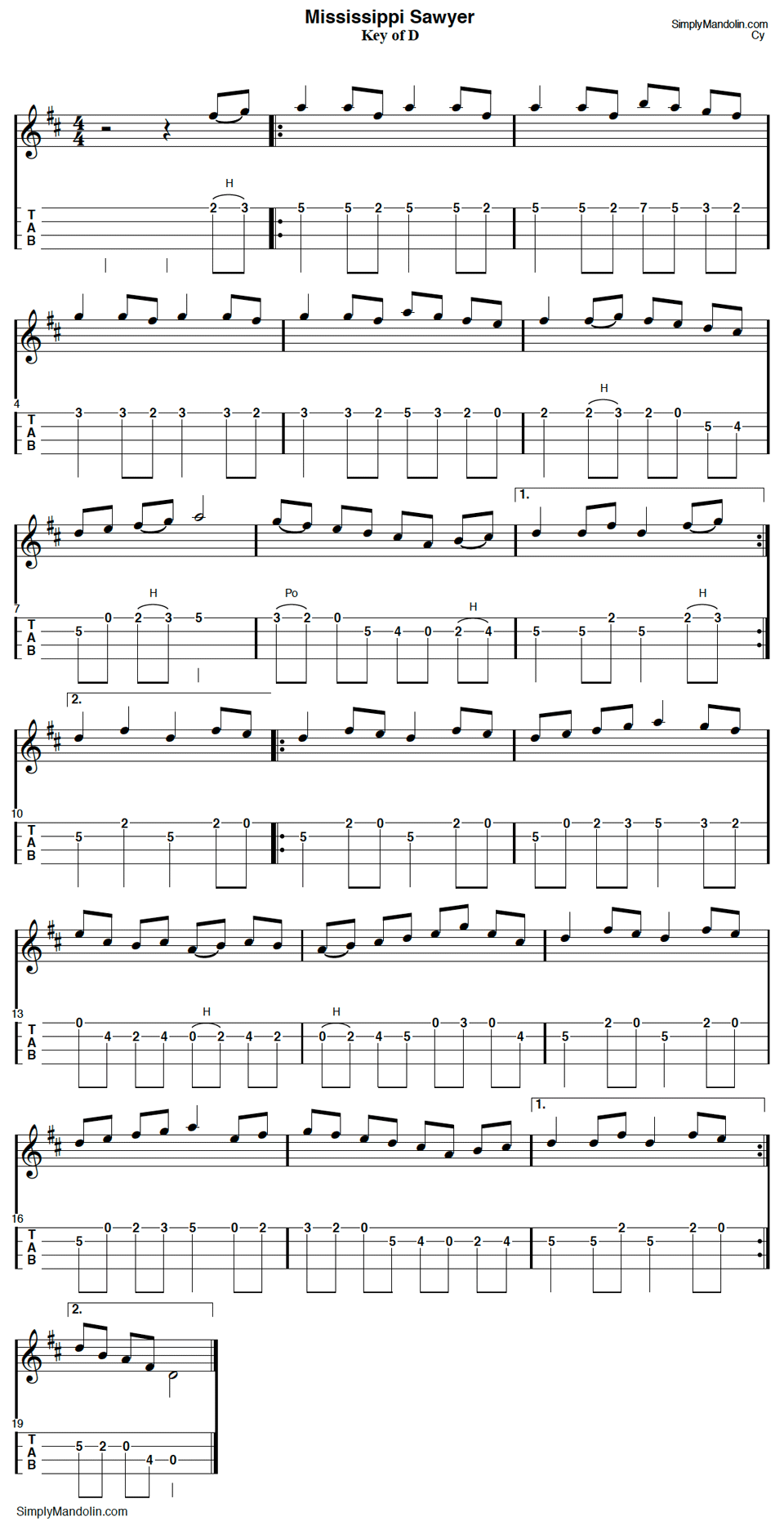
What’s in a name?
I always thought that the fiddle tune ‘Mississippi Sawyer’ was inspired by Mark Twain’s great novel ‘Tom Sawyer’. Much to my surprise, I find out that may not be the case.
I found an article about this very tune from the Folk Life Center at the Library of Congress website. That article suggests a different origin for the name.
The article explains how trees or logs will sometimes get stuck in the river bottom, with the other end bobbing just above, or just below, the surface. These hidden obstructions can be treacherous for river craft. Riverboat crews and other boatman on the Mississippi had to watch out for these hidden dangers, and called them ‘Mississippi Sawyers’.
That may be the case, I don’t know.
But, if you look up ‘sawyer‘ in Wikipedia, it states that “a sawyer is an occupational term referring to someone who saws wood, or operates a sawmill“.
So, the fiddle tune ‘Mississippi Sawyer‘ could have been inspired by someone who works in a sawmill along the Mississippi.
That being said, at one time Mark Twain (Samuel Clemens) was a riverboat pilot on the Mississippi River. So, he would be familiar with the term ‘Mississippi Sawyer’.
Who knows for sure!
The Tune
This tune is in the Key of D Major. Play the A-part twice, then the B-part two times. Listen to the recording several times to get the tune in your head. Then work at it slowly, line by line.
When you’ve got it figured out, use a metronome to build speed.
Listen to Mississippi Sawyer for mandolin:

Downloads:
An Octave Lower
If you listen to several different fiddle recordings of this melody, you may notice that the A-part is often played an octave lower the second time through. This is a commonly used method to add a little variety to the tune, which can enhance the overall listening experience.
Here’s a great exercise to work on:
After learning to play the above arrangement for Mississippi Sawyer, try writing out a note-for-note version one octave lower.
Here’s a few bars to start you out:

Hope you enjoy working this out on your mandolin.
Cy…
Don’t Miss a Beat!
Join our mailing list for new tabs, practice ideas and study material.
Keep informed of new projects. Its free!
No spam, ever. That’s a promise!

